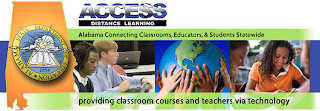
One good thing about a Personal Learning Network is that it can grow with you. For those of us who are just beginning to venture into the career we want, a personal learning network is probably going to be an invaluable resource for the future. At this point in time, my personal learning network is a fledgling entity. I am not yet in my field of interest, which is physical education, but I am and have been making small steps toward it. The components of my personal learning network are my technological baby steps toward my goal of being a physical education teacher and volleyball coach.
PE Central is "The Premier Web Site for Health and Physical Education." It is jam-packed with resources and information for students, parents, and educators. Some of the resources it offers are: lesson ideas, assessment ideas, jobs, professional information, and related websites. While doing research on PE Central, I also found it as a page on Facebook called "Physical Ed Wants You!" Additionally, there is also a blog site called "Physical Education Info from PE Central" that has interesting information on a variety of P.E. topics and links to other P.E. sites. You can also subscribe to a free newsletter from the site. One of my favority aspects of the site is the "Kids Quote of the Week" section.
Where to start? This website is exactly what the title says! It has a ton of links for all kinds of physical education issues, from health, fitness and nutrition to state P.E. standards. It is also a digest with articles that can be researched and referenced. There is also a forum for questions or comments for the National Association for Sport and Physical Education (NASPE). It features lessons and puzzles from the Puzzlewise/PE Health program. There is a news section and a section where various types of grants are listed. You can also receive a free monthly emailed digest from pelinks4u, and an update of the latest pe news.
One of my dreams is to coach my own volleyball team one day. Until then, I am a huge fan and at the USA Volleyball website, I can find information on every level of volleyball from juniors to beach. USA Volleyball is "where the Olympic journey begins." I have been trying for several years to develop a club team in South Mobile county, to service the girls who cannot travel or afford to pay the club fees in Mobile. Phillip Bryant, Commissioner of
the Gulf Coast region, has been instrumental in assisting me in my endeavors. He is always extremely patient and helpful.
As a referee for high school volleyball, I am a member of the Alabama High School Athletic Association. The website has all the information one needs in reference to high school athletics in Alabama, including sections for schools, coaches and officials. Lane Lawley is the Southwest District Director of officials for volleyball. He has been a wonderful mentor to me over the past several years and he is a great official, too! Once I become a volleyball coach, I am sure the AHSAA website will be even more beneficial to me.
My friend and classmate from high school, Bobby Golden, is a personal trainer and very physically active guy. I am a prospective physical education teacher and through Facebook, Bobby and I can discuss the physical aspect of physical education. He can give me pointers, not only for my own personal physical training, but for my future students and volleyball players, as well. Bobby has recently begun rock climbing, which is something I would love to try myself, so he will be able to give me good information on that, too.














